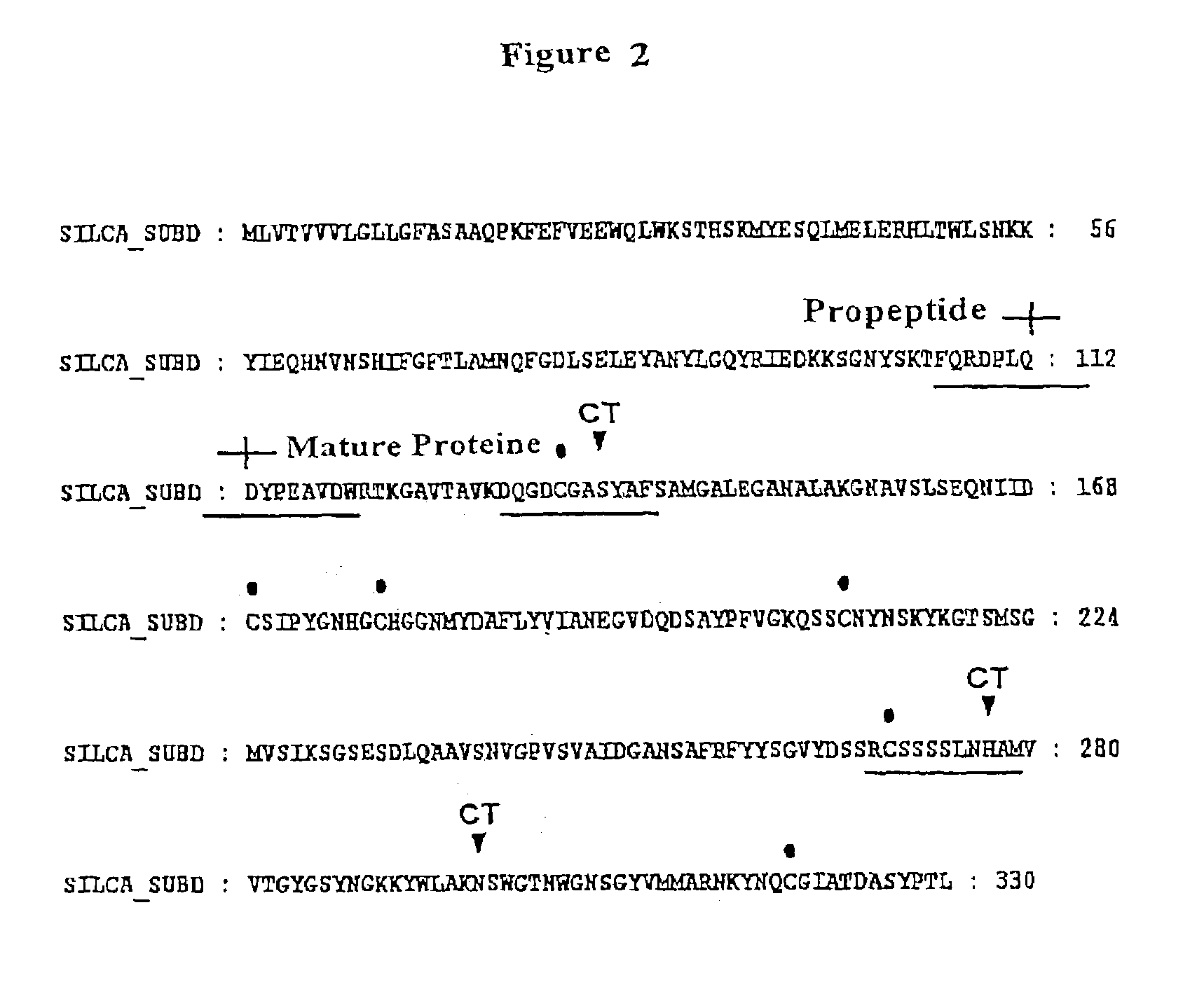Silicatein-mediated synthesis of amorphous silicates and siloxanes and use thereof
a technology of silicatein and amorphous silicates, which is applied in the field of silicatein-mediated synthesis of amorphous silicates and siloxanes, can solve the problems of requiring drastic conditions in the chemical synthesis process of silicates, unable to meet the requirements of high-efficiency silicate synthesis, and can only be produced in a cost-intensive manner, so as to achieve fast and effective affinity chromatography purification of enzymes
- Summary
- Abstract
- Description
- Claims
- Application Information
AI Technical Summary
Benefits of technology
Problems solved by technology
Method used
Image
Examples
Embodiment Construction
[0047]The silicatein protein derived from sponges contains characteristic sequence portions, several of which shall be mentioned: region around the serine-rich amino acid-cluster (in case of S. domuncula: amino acids 267–277); region around the cysteine, the first amino acid of the catalytic triade (in case of S. domuncula: amino acid 138), which is absent in silicatein and present in the related enzymes cathepsines; region around the transition between propeptide and the processed peptide (in case of S. domuncula: amino acids 112 / 113).
[0048]The gene for silicatein can be identified from cDNA-libraries by using the technique of the polymerase-chain reaction, e.g. in ZapExpress and in Escherichia coli XL1-Blue MRF′, using suitable degenerated primers (for example: reverse primer 5′-GAA / GCAG / CCGIGAIGAA / GTCA / GTAG / CAC-3′ together with the 5′-vector-specific primer [region around amino acids 267–277]—or the forward primer at the same protein-segment together with the 3′-vector-specific p...
PUM
 Login to View More
Login to View More Abstract
Description
Claims
Application Information
 Login to View More
Login to View More - R&D
- Intellectual Property
- Life Sciences
- Materials
- Tech Scout
- Unparalleled Data Quality
- Higher Quality Content
- 60% Fewer Hallucinations
Browse by: Latest US Patents, China's latest patents, Technical Efficacy Thesaurus, Application Domain, Technology Topic, Popular Technical Reports.
© 2025 PatSnap. All rights reserved.Legal|Privacy policy|Modern Slavery Act Transparency Statement|Sitemap|About US| Contact US: help@patsnap.com



